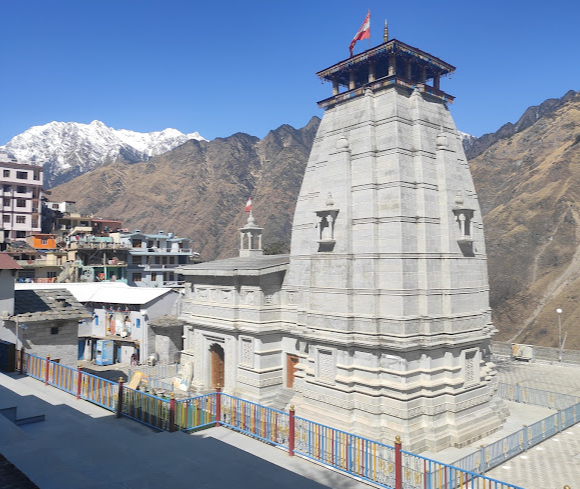The Sri Paramapurusha Perumal Temple is believed to have been established by the Katyuri rulers, who governed the region from the 7th to the 11th centuries CE. King Vashudev Katyuri, the founder of the Katyuri dynasty, is credited with building the Basdeo temple at Jyotirmath. Originally of Buddhist origin, Vashudev later embraced Sanatana Dharma, influenced by Adi Shankara. The Chand kings, who succeeded the Katyuris, continued this tradition. It is also said that Adi Shankara performed intense penance under a tree at this site, gaining enlightenment and establishing the hermitage known as ‘Jyothirmutt,’ which eventually became ‘Joshimutt.’ According to legend, Goddess Parvati also worshipped the Lord at this sacred place.
Puranic Significance:
King Nandar is believed to have resided in this Kshetram, performing numerous Yagams for the well-being of humanity, leading to the place being called "Nandprayag." Kanva Maharshi is also said to have lived here. During the winter season, when the Badrikashram temple is closed, the Badrinath Utsavar idol is brought to this temple, where the Lord gives His darshan as Badri Narayanan for six months. Among the 108 Divya Desams, there are two where only the soul (Aathma) can reach: Paramapadham and Thirupparkadal. However, in Thiruppirudhi, the Lord gives darshan in His reclining form (Kidantha kolam) as He is in Thiruparkadal. Only Thirumangai Alwar has sung Mangalasasanam on this Perumal, and in three of his ten Paasurams, he compares the Lord to the avatars of Rama, Krishna, and Narasimha. Adi Shankaracharya constructed a temple here, where Sri Narasimhar and Nindra Kola Vasudevar are worshipped. It is said that Adi Shankaracharya also performed penance here and established a Peetam, gaining enlightenment and writing the "Sankara Bhashyam."
